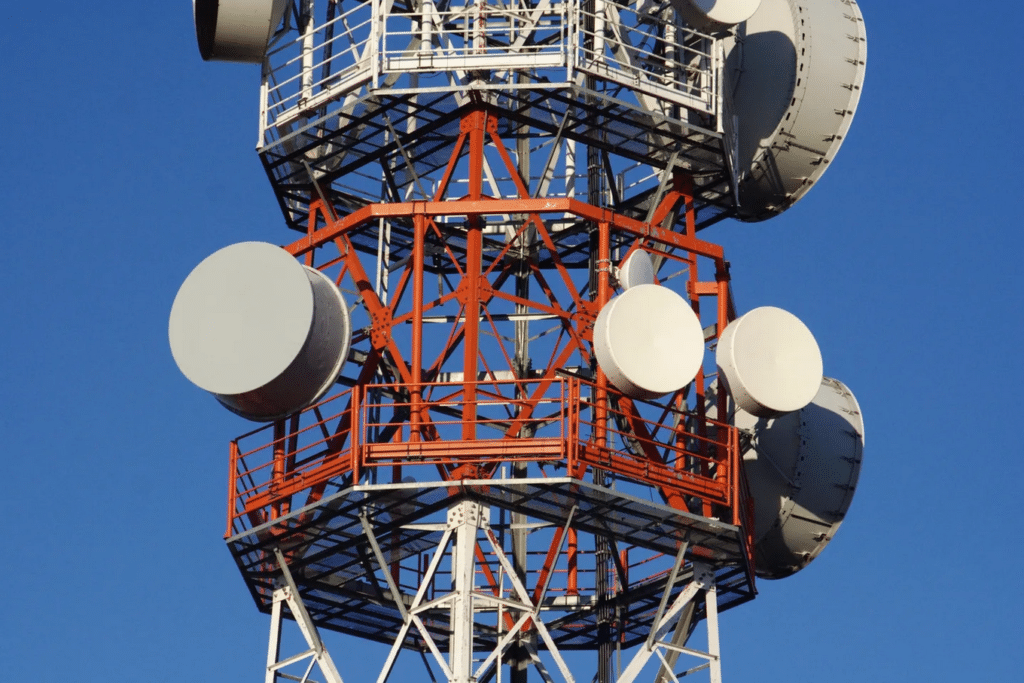Microwaves and Communication

Microwave communication technology is commonly used across the United States and elsewhere to provide reliable transfers of data used for TV stations, cell phone companies, wireless internet companies and many federal programs for defense communications. In this article we will break down what constitutes a microwave (versus a radio wave or others waves) and how those are used in conjunction with communication towers.
What's a Microwave?
By definition, a microwave is an electromagnetic wave with a wavelength between 0.003 and 0.3 meters and a corresponding frequency range of 1 GHZ to 100 GHz. This is a little shorter in wavelength than a radio wave and gives rise to its name of “micro” meaning smaller.
Microwaves travel by line-of-sight and do not bounce around hills or reflect off the ionosphere. As such microwave communication antennas (dishes) are frequently mounted on towers, to extend the range in which communication can take place between two towers (usually less than about 40 miles).
Why use Microwaves for communication?
Microwave technology is used for point-to-point telecommunications. Due to the ability to more easily focus the waves into narrower beams than radio waves, higher frequencies allow high data transmission rates. Another advantage to microwave communication is that the antenna size can be smaller as antenna sizes are inversely proportional to the transmitted frequency. Higher frequency, smaller antenna! Also, the short wavelengths allow omni-directional antennas to be made very small (such as those used on cell phones and laptops).
Due to their ability to transmit large amounts of data in a short amount of time regardless of weather, rain, snow or fog – microwaves are used for much of the world’s data and telephone communications (moving data between ground stations).
Microwave Tower Maintenance
Alignment between microwave antennas is critical for successful transmission and reception. Another item that is fundamental for microwave technology maintenance is to ensure the waveguides and waveguide runs leading to the antenna are in good condition. Waveguides are used to confine and focus the waves generated and received by the antenna and are expensive to build and maintain.

